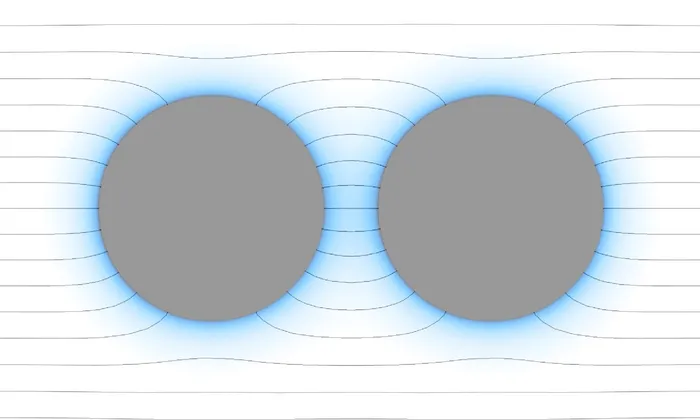Hydrodynamic mechanisms for particle aggregation at fluid interfaces
Understanding the forces on small bodies at fluid interfaces has significant relevance to a range of natural and artificial systems. In this talk, I will discuss two recent investigations of fluid-mediated attraction mechanisms of non-Brownian particles, at free surfaces and within density stratified fluids.
In the first part, I will present direct measurements of the attractive force between centimetric disks floating at an air-water interface. It is well known that objects at a fluid interface may interact due to the mutual deformation they induce on the free surface, however few direct measurements of such forces have been reported. In the present work, we characterize how the attraction force depends on the disk radius, mass, and relative spacing. The measured forces are rationalized with scaling arguments and compared directly to numerical predictions.
In the second part, I will describe a novel attractive mechanism by which particles at isopycnals within a density stratified fluid may self-assemble and form large aggregates without need for short-range binding effects (adhesion). This phenomenon arises through a subtle interplay of effects involving solute diffusion, impermeable boundaries, and the geometry of the aggregate. Control experiments with two particles isolate the individual dynamics, which are quantitatively predicted through numerical integration of the underlying equations of motion.
Ongoing and future work in these areas will also be discussed.

Daniel M. Harris is an Assistant Professor of Engineering at Brown University in the Fluids and Thermal Sciences group. Before joining Brown, Dan was a Postdoctoral Research Associate and Lecturer at the University of North Carolina at Chapel Hill in the Department of Mathematics. Dan received his B.S. in Mechanical Engineering from Cornell University in 2010 and his Ph.D. in Applied Mathematics at MIT in 2015.
Dan’s primary research interests are in interfacial phenomena, microfluidics, transport phenomena, and nonlinear dynamics. His research involves an integrated experimental and theoretical approach. Dan has also received numerous awards for his scientific visualizations, including being selected as the winner of the 2016 NSF/Popular Science Visualization Challenge in Photography, as well as being a five-time winner of the American Physical Society’s Gallery of Fluid Motion.
